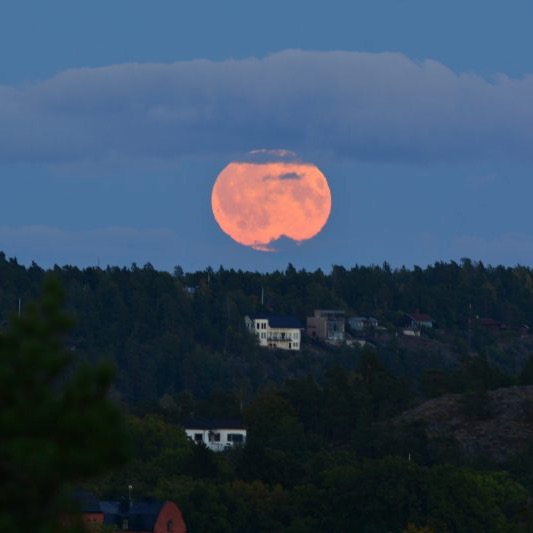
Tonight – September 1-2, 2020 – presents the third and final full moon of our Northern Hemisphere summer (or Southern Hemisphere winter). That is, it’s the third of three full moons to fall between the June 20 solstice and September 22 equinox. Is it the Harvest Moon? No, but it’ll share some characteristics with that famously named moon. The Harvest Moon is the closest full moon to the autumn equinox. It’ll fall in 2020 on October 1 for us in the Northern Hemisphere.
Visit Sunrise Sunset Calendars to know the moonrise time, remembering to check the moonrise and moonset box.
Meanwhile, we in North America will call this September 1-2 full moon by the name Fruit Moon, Corn Moon or Barley Moon.
The moon turns precisely full on September 2, 2020, at 05:22 UTC. At North American and U.S. time zones, that translates to September 2, at 2:22 a.m. ADT, 1:22 a.m. EDT, 12:22 a.m. CDT – yet on September 1, at 11:22 p.m. MDT, 10:22 p.m. PDT, 9:22 p.m. AKDT and 7:22 p.m. HST.

What is a Harvest Moon, and how will this September 1-2 full moon resemble the Harvest Moon, even though it doesn’t bear that name? The Harvest Moon – the closest full moon to the autumn equinox – has a reputation for being bigger and brighter and yellower than other full moons. That reputation isn’t deserved; the Harvest Moon is not bigger, it’s not brighter, and it’s not yellower than other full moons. But, in autumn, the ecliptic – or path of the sun, moon and planets – makes a narrow angle with respect to the horizon in the evening hours. On average, the moon rises about 50 minutes later each night, but, due to the autumn angle of the ecliptic, the Harvest Moon comes up near the time of sunset for several evenings in a row around the time of full moon. Around the time of the Harvest Moon, we have what looks like a full moon, rising in or near twilight, for several nights instead of just one.
Tonight’s moon does that, too. There’s a shorter-than-usual time between moonrises on these next few nights. That’s because we’re near the autumn equinox (although not as near as we’ll be at the next full moon, on October 1, when the effect will be even more pronounced).
Check out the custom calendar at Sunrise Sunset Calendars, and be sure to click the box for moonrise times. See if you notice that the moonrise in your location is less than 50 minutes later between the night of September 1 and the night of September 2 or 3 from your location. It will be, if you’re at a temperate latitude in the Northern Hemisphere.
Meanwhile, from temperate latitudes in the Southern Hemisphere, there will be a longer-than usual time between moonrises for the next few evenings.
Astronomically speaking, the full moon occurs at a well-defined instant: when the moon is exactly 180o from the sun in ecliptic longitude (also called celestial longitude). That means the moon stands opposite the sun as measured along the ecliptic, which marks the sun’s annual pathway through constellations of the zodiac. Another way of putting it: at the instant of full moon, the moon-sun elongation equals 180 degrees. Visit Unitarium.com to find out the present moon-sun elongation (if the number is positive, the moon is waxing; if negative, the moon is waning).
Bottom line: Full moon is September 2 at 05:22 UTC. Enjoy the third and final full moon of northern summer (southern winter) tonight.











